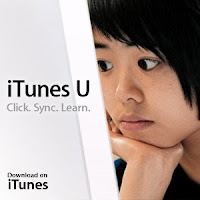
Today I listened and read some a few blogs between a young girl named Kaia and Mr. C's class. In EDM 310 we have an assignment called comments for kids. In this assignment we leave comments on kids blogs from around the world. This is how the students found Kaia's blog. The class begin leaving her comments on her blog, which her father was helping her compose. Her father soon noticed the comments pouring in and decided to contact Mr. C. They decided to do a skype to allow the students to ask questions. Kaia's father told the students that Kaia might have a hard time reading and grasping the comments they were leaving on her page. The students then decided to create a voicethread and a video.
I also read the blog Singing Hearts: Intrepid Teacher by Kaia's father. He tells us about how he started his daughters blog. He read a book called The Last Child in the Woods,this book made him worry that his daughter was not getting enough fresh air or nature. He then decided to go out with her and explore their surroundings. Kaia and her father took pictures of everything. He stated that his daughter had so much fun and was so proud of her pictures. He then asked her if she wanted to see her pictures on the "big screen." Of coarse she said yes, so he then proceeded to put her pictures into a photo essay on her blog. This is when he started to notice the comments pouring in from all around the world. He could not believe the connections she was making with so many people.

I feel that this is such an amazing way to use technology. Students in a different part of the U.S. got in touch with the father of the girl whos blog they had been commenting on. Technology has grown so much and we can use it in education in many ways. By being able to leave videos and use skype with others we are creating numerous connections for our students. Also, it gives us a fun way to teach the students to use technology. I forsee this being a regular teaching tool in the very near future.











 Virgil Griffith (creator of wiki scanner)
Virgil Griffith (creator of wiki scanner)